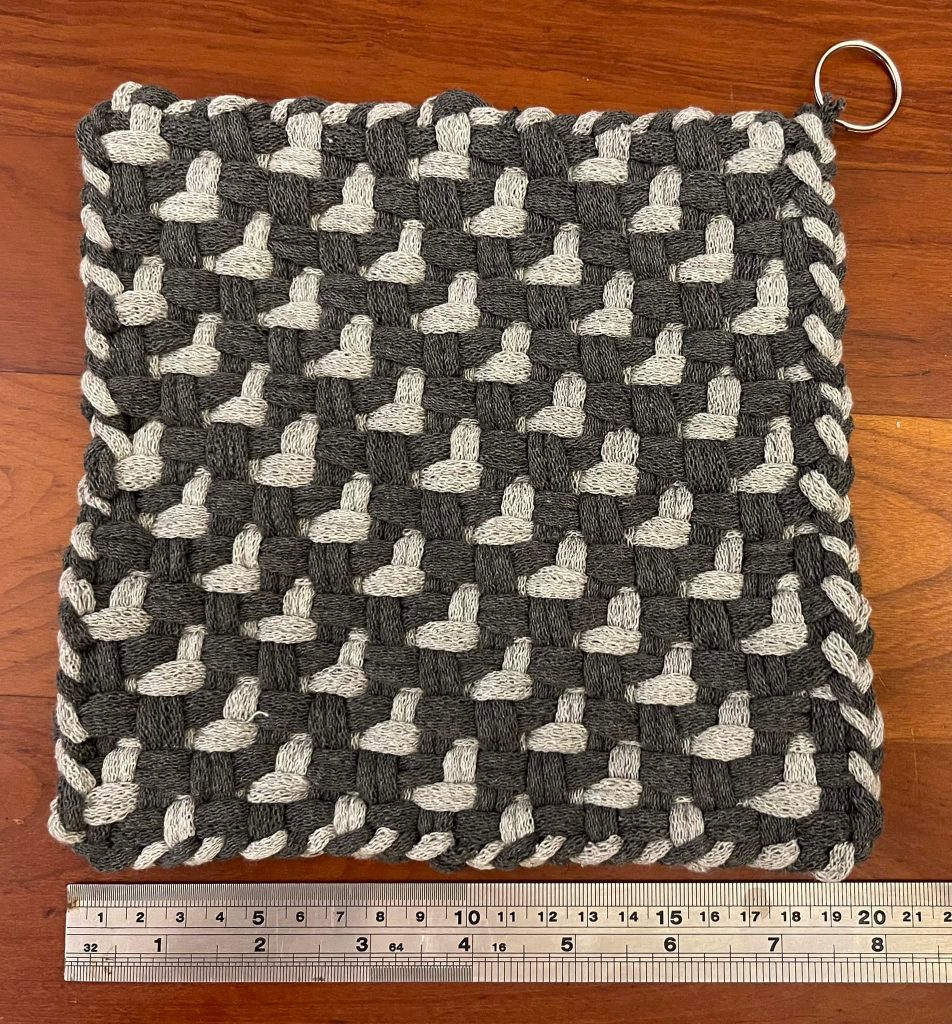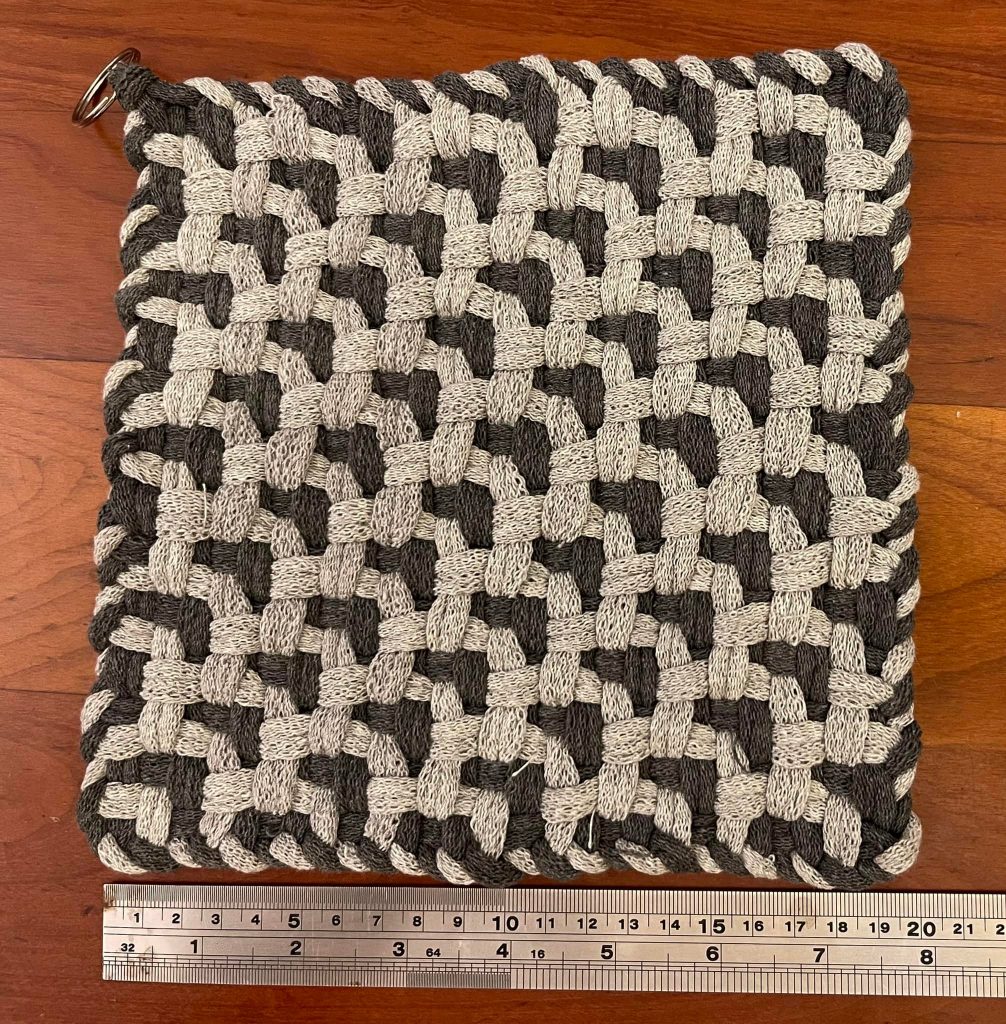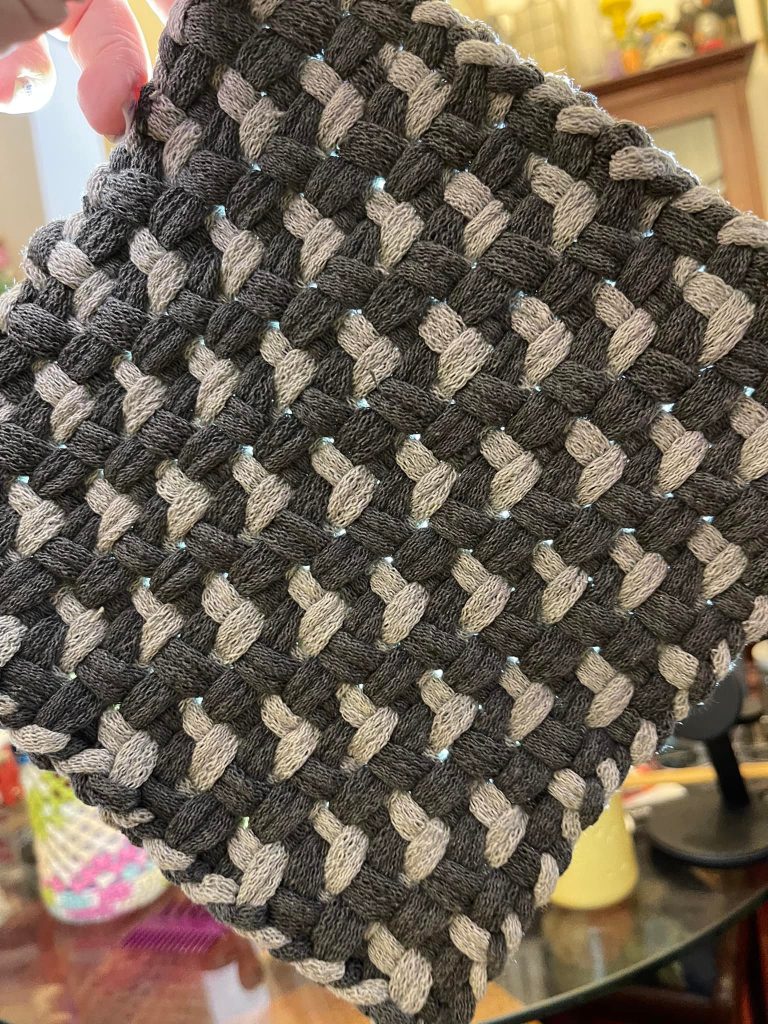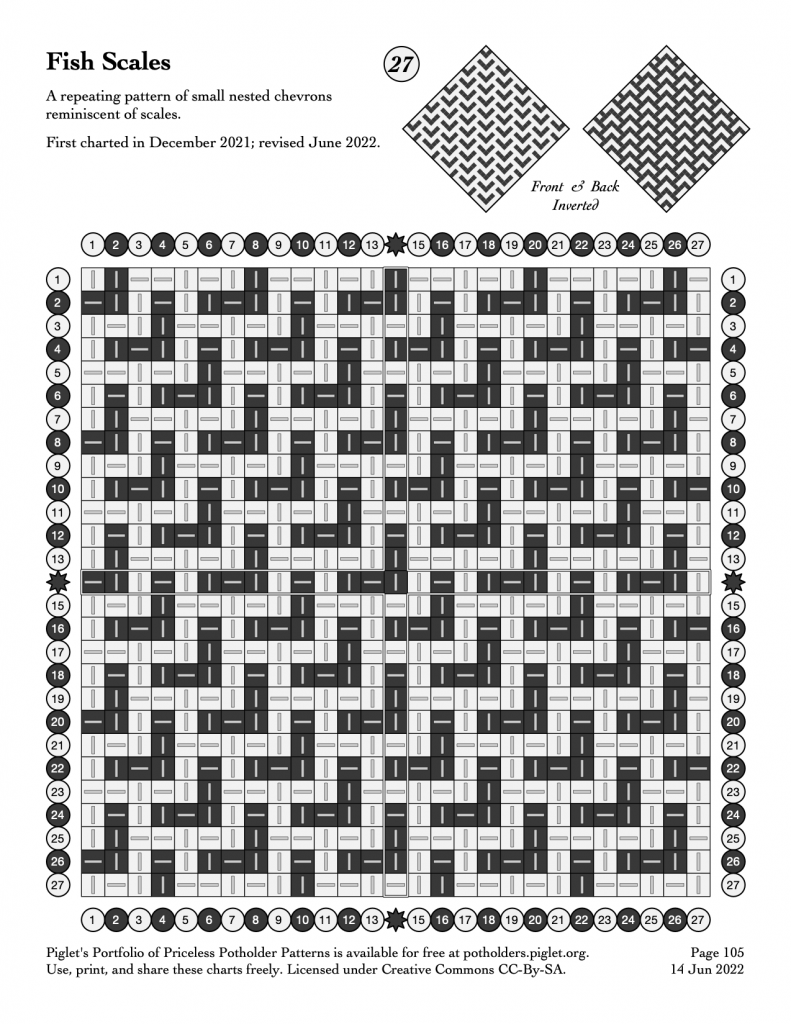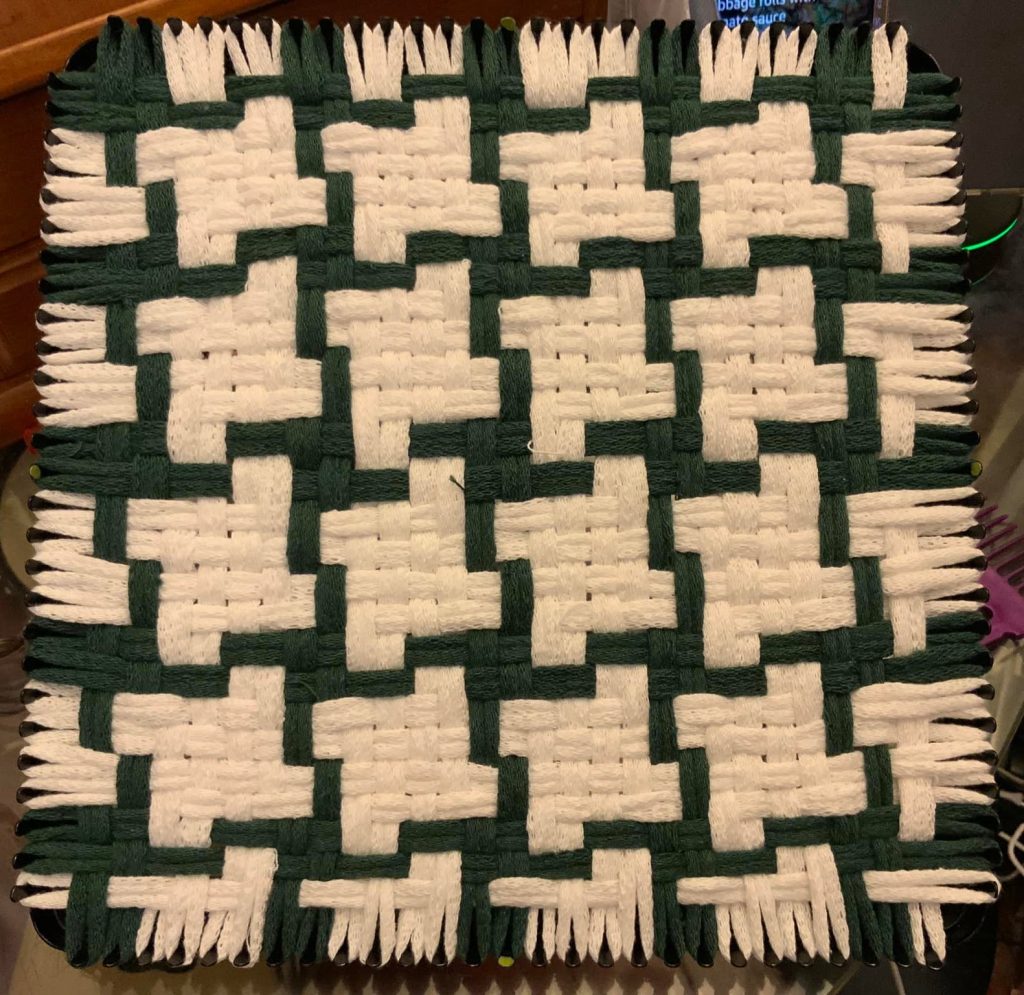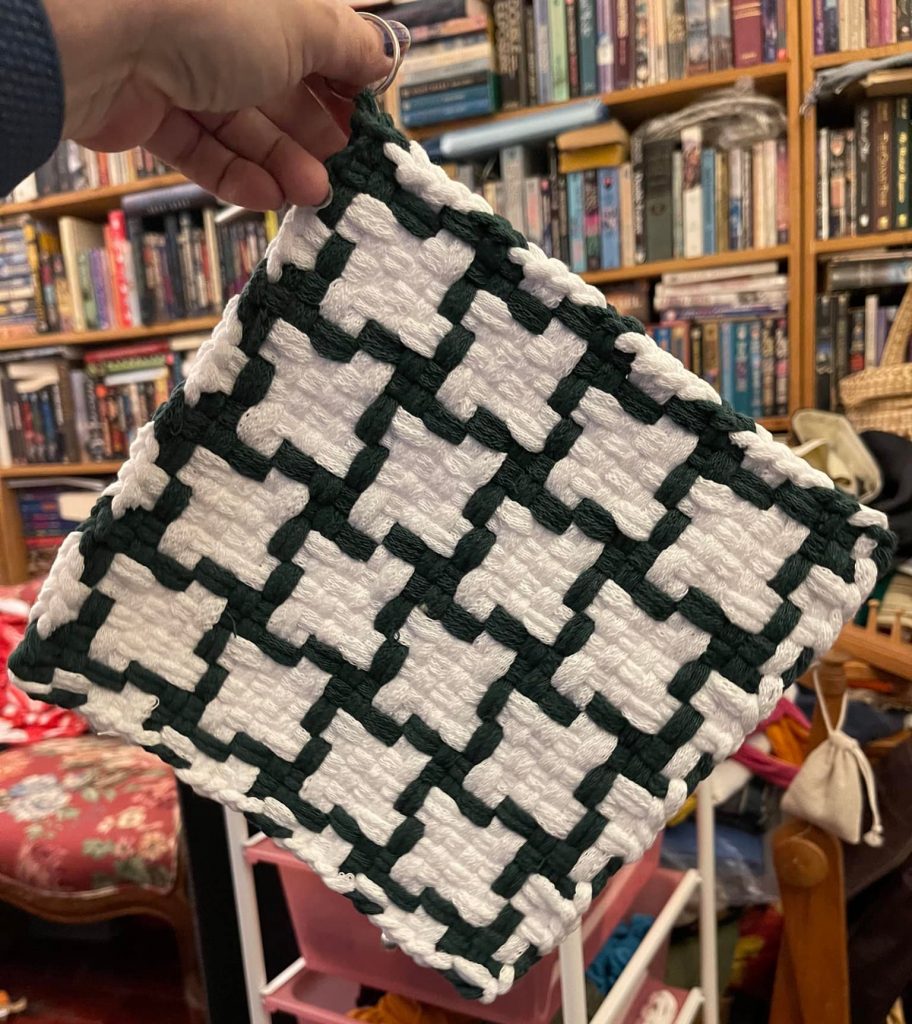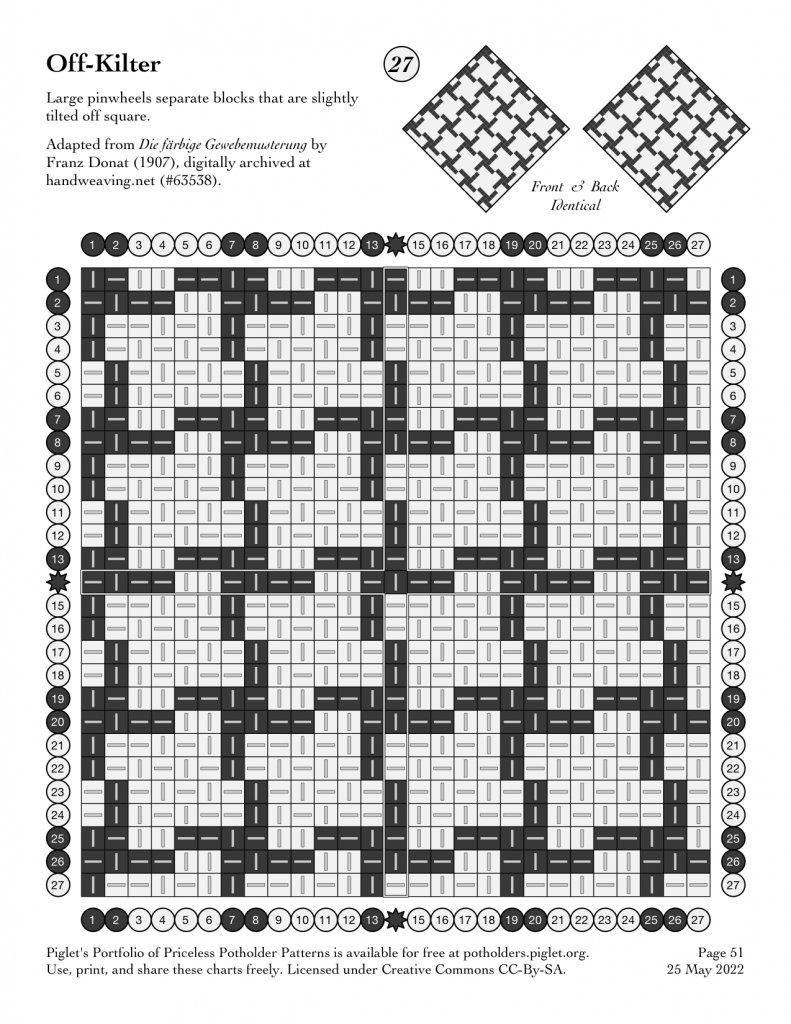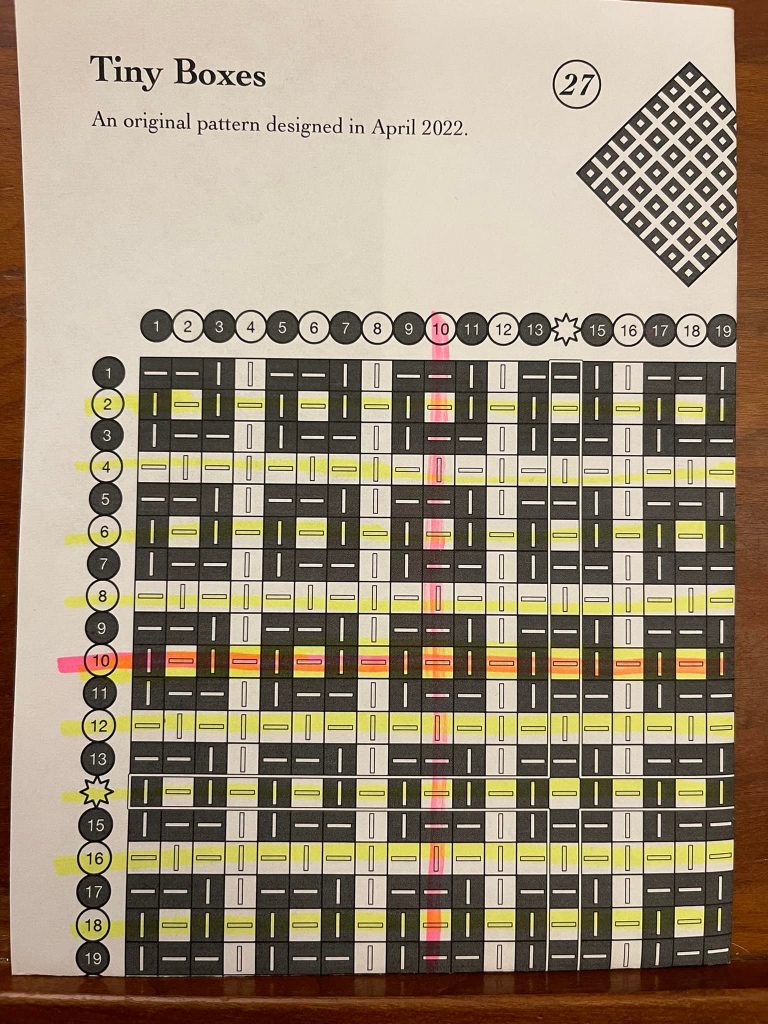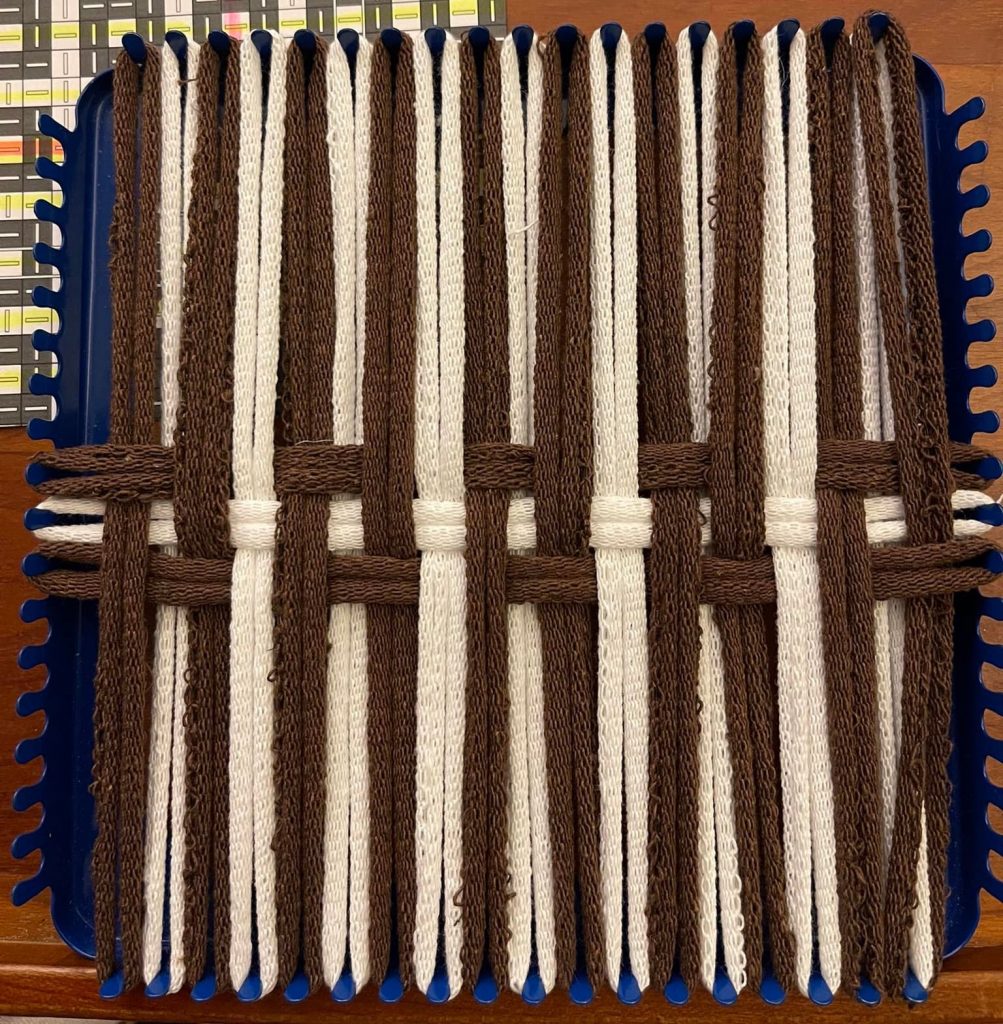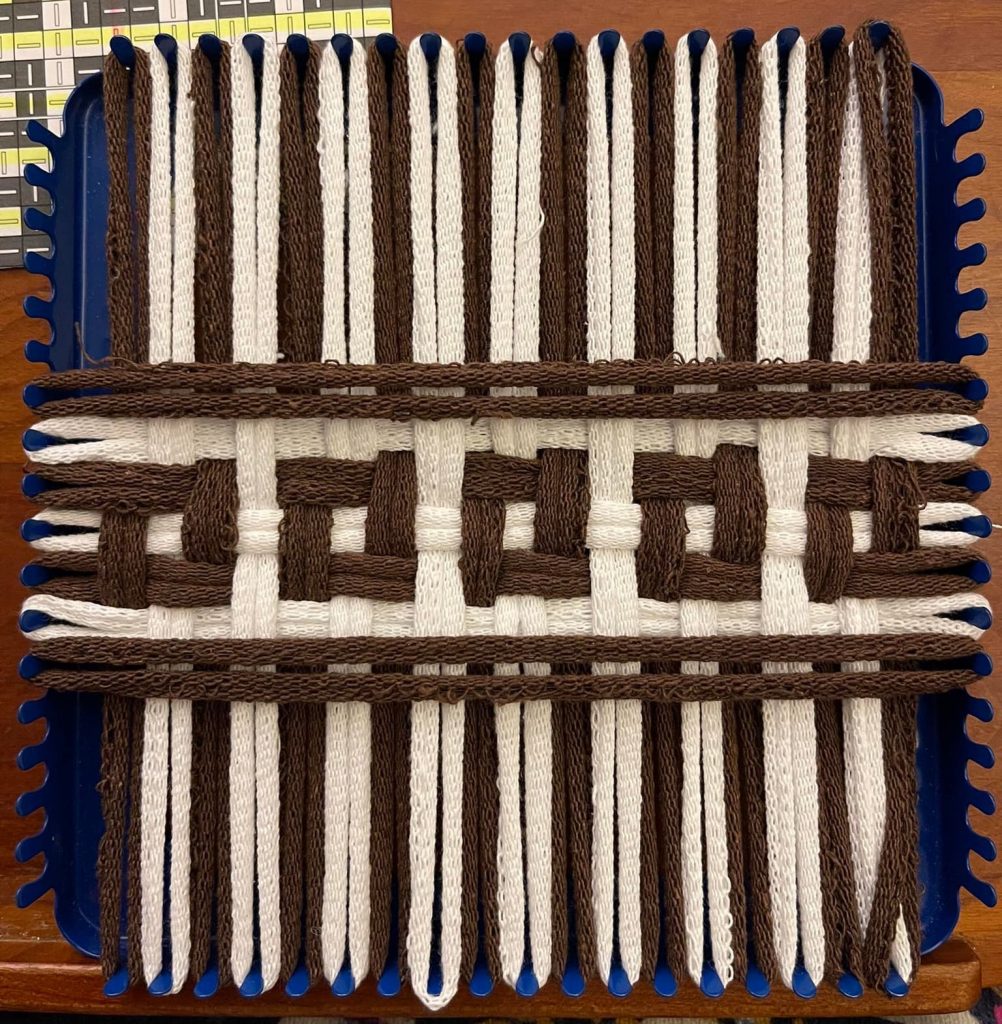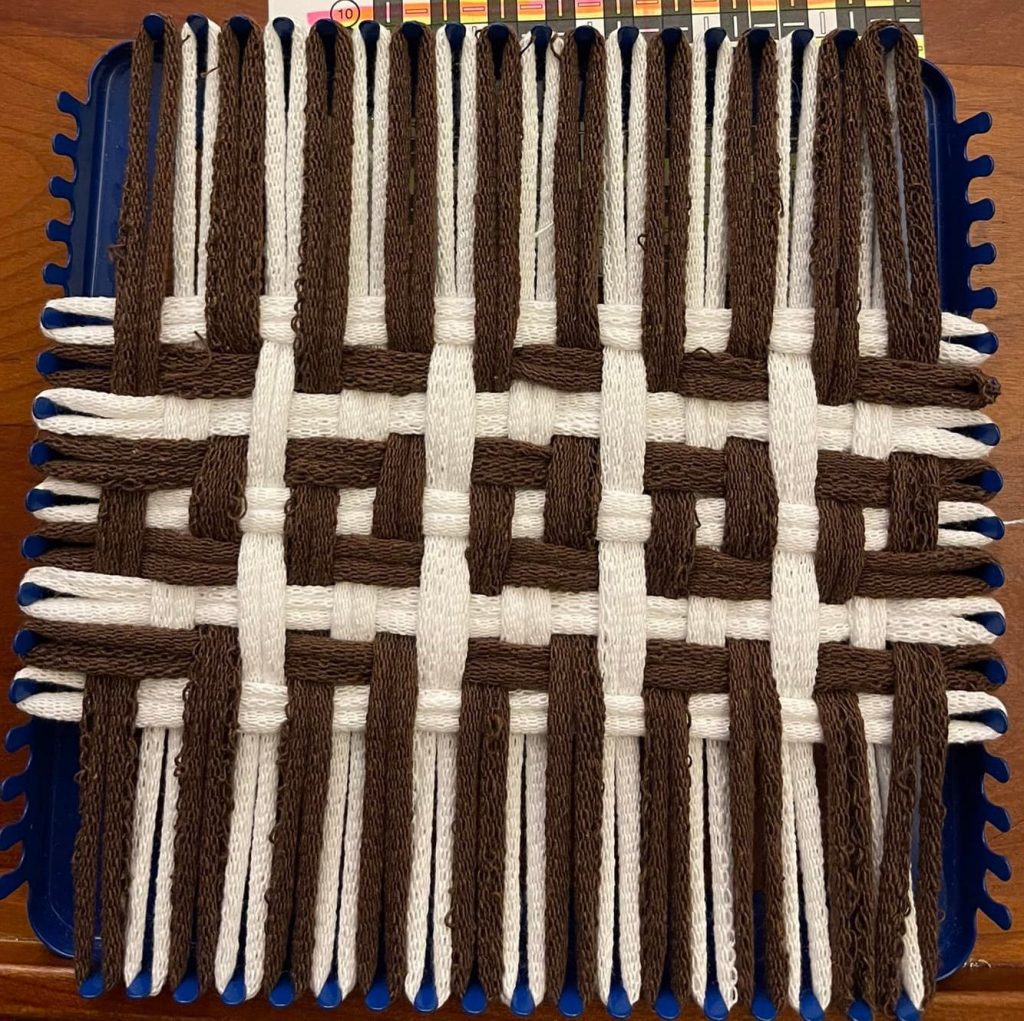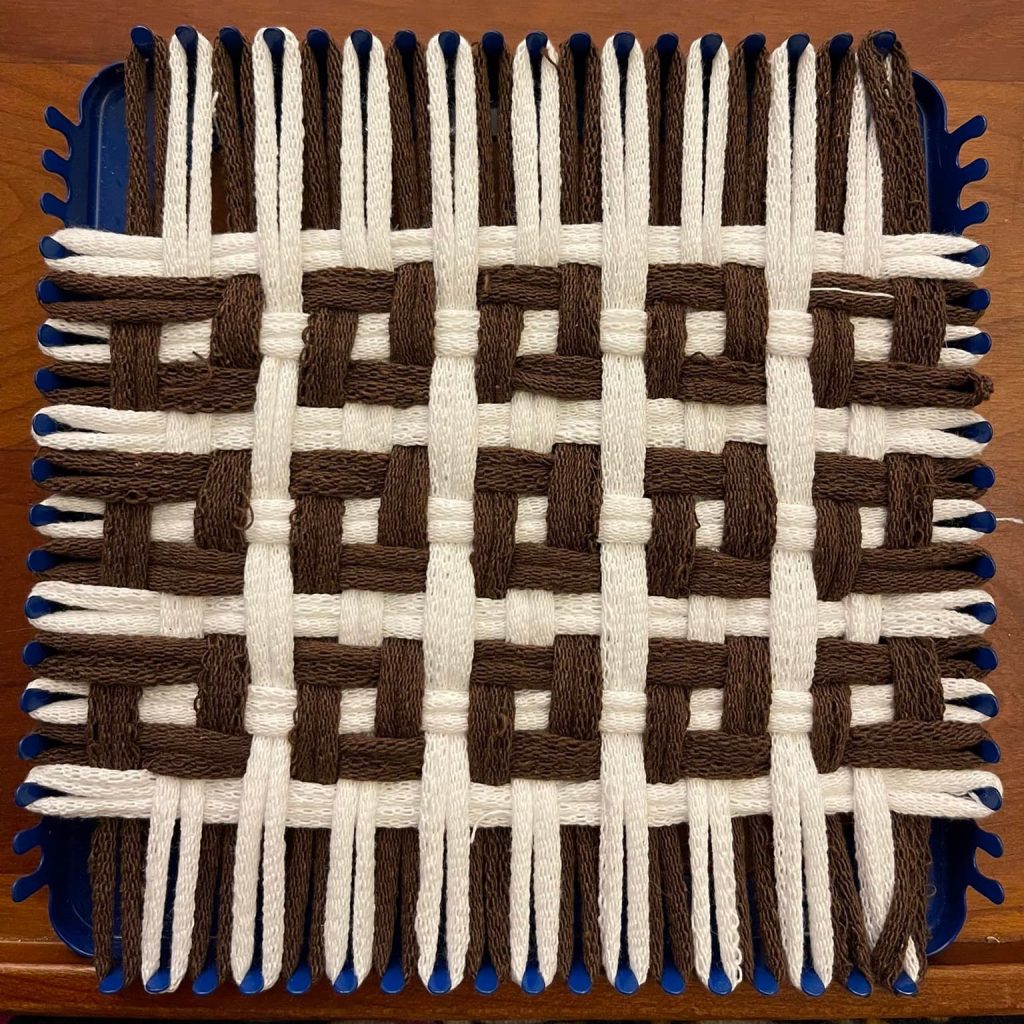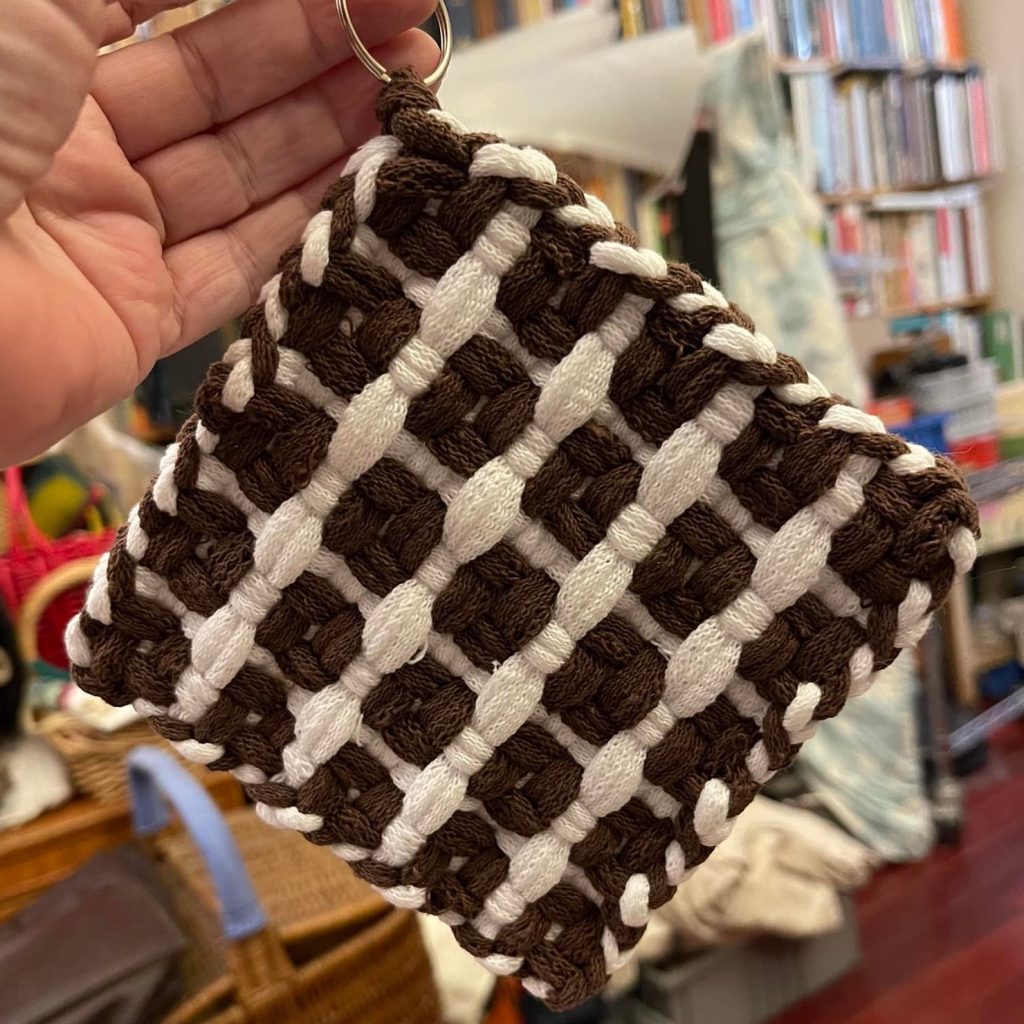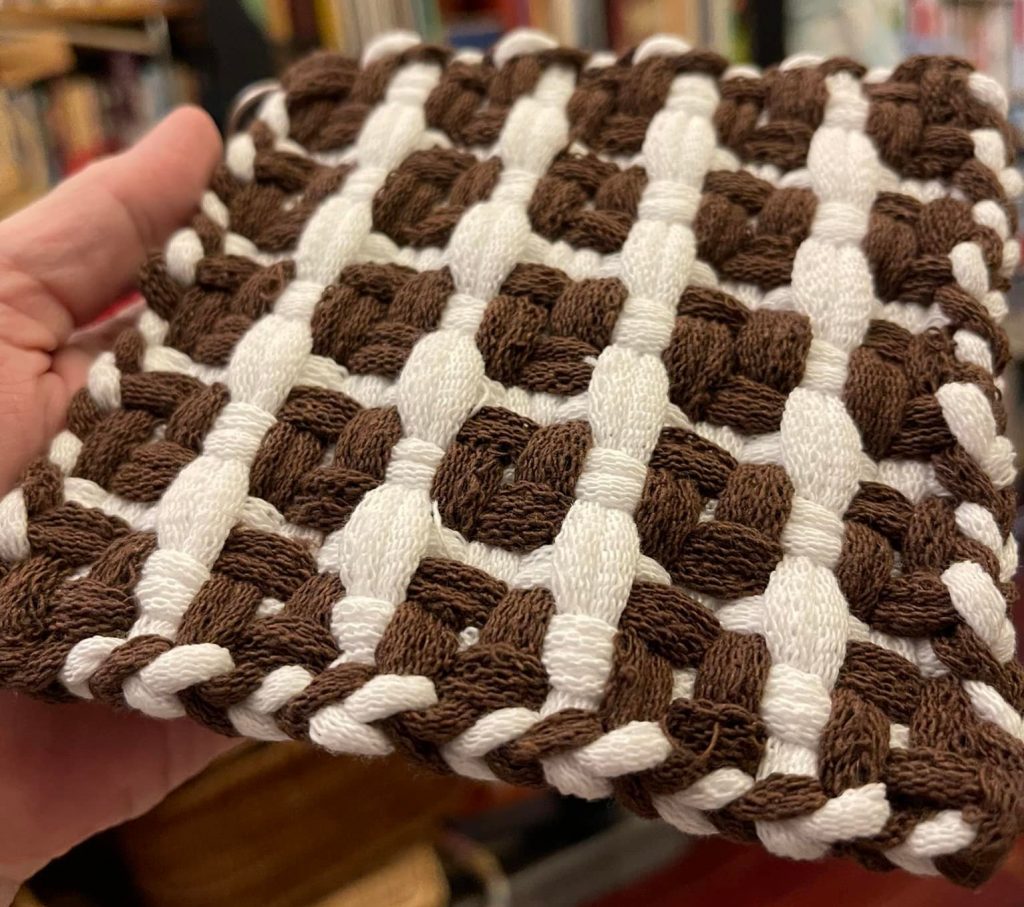Okay, remember the other day, when I said “when is a potholder not a potholder” and showed you a pretty fabric that looked like fish scales but was *not* a heavy-duty potholder?
*THIS* is the heavy-duty version. 3-color fishscales, surprisingly easy to weave. Please don’t be daunted by the chart. Once you get going, the pattern establishes itself and it is very clear on each row what you want to do. Texturally, the fabric is remarkably flat and evenly flexible, despite its thickness, with very little bias.
In my sample, I used black, pewter, gray and white. I also bound off so that the scales lay sideways, as they would on a fish in the water. The pattern also bears a strong resemblance to blooms and hearts. If you work in green with pastels, or reds/pinks/whites, you would have a lovely garden or multiple hearts.
Threading in both directions follows an ABACAD squence starting from the top-left or bottom-right corner. Weaving switches between rows of over-2/under-1 and rows of over-3/under-3, shifting by one warp on each row.






